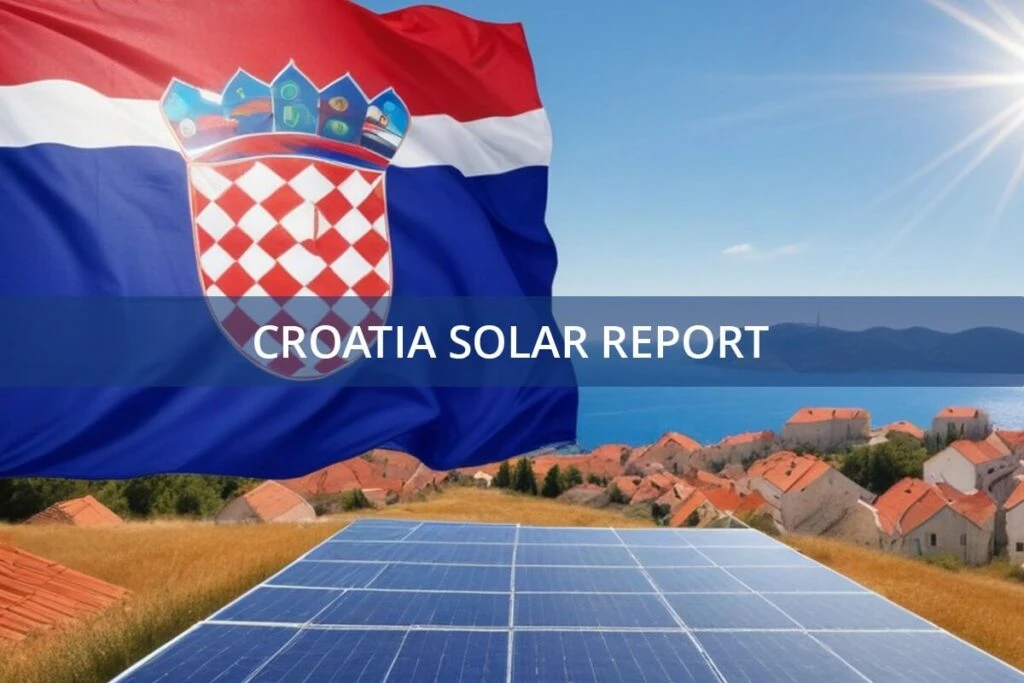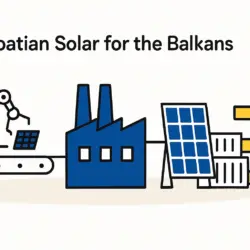Croatia’s state-owned energy company, Hrvatska elektroprivreda (HEP), is set to construct 90 rooftop solar power plants by 2026. With a total capacity of 5.3 MW, these plants will be built on state-owned buildings across the country, including hospitals, schools, and universities. This initiative, part of a broader effort to increase renewable energy production, highlights the growing accessibility and importance of understanding the basics of solar panel manufacturing. It is a key component of Croatia’s accelerating energy transition, which recently saw the country’s total solar capacity surpass the 1 GW milestone.
Investment and Funding for Croatia rooftop solar
The project is valued at 11.2 million euros, with 85% of the funding coming from the EU’s Recovery and Resilience Facility (RRF), according to Balkan Green Energy News. The solar power plants will be installed on buildings in 18 of Croatia’s 20 counties. This level of investment aligns with national strategies to bolster solar panel manufacturing in Croatia and reduce reliance on imported energy. The electricity generated will be used to power the buildings where the plants are installed, thereby reducing reliance on the national power grid and lowering energy costs.
HEP has already signed contracts for the installation of 55 solar power plants, with a total capacity of 3.3 MW, on buildings owned by the Vukovar-Srijem County. These plants are expected to produce 3.9 GWh of electricity annually, covering around 66% of the county’s power consumption.
Benefits for Public Institutions with Croatia rooftop solar
The installation of rooftop solar power plants will significantly reduce the electricity costs for public institutions. For instance, the Vukovar-Srijem County will save approximately 800,000 euros annually. HEP’s President, Frane Barbarić, emphasized that the project will help mitigate the financial burden of high energy prices, which have increased by 20% to 60% in recent years. This project not only offers immediate financial relief but also propels the nation closer to its ambitious Croatia solar power target of 2.5 GW by 2030.
The rooftop solar power plants will also contribute to Croatia’s renewable energy goals. The electricity generated will be used to power the buildings where the plants are installed, thereby reducing the carbon footprint of these public institutions. The initiative aligns with Croatia’s commitment to increasing the share of renewable energy in its energy mix.
HEP’s Renewable Energy Portfolio and Croatia rooftop solar
HEP has been actively expanding its renewable energy portfolio, a strategy that mirrors the country’s impressive growth in solar energy. As a testament to concerted efforts from both public and private sectors, Croatia recently celebrated its installed solar capacity surpassing the 1 GW milestone. HEP’s own renewable capacity has reached 460 MW, with plans to increase it to 550 MW by the end of the year. In 2023, HEP produced 1.1 TWh of electricity from renewable sources, including solar power plants, wind farms, and hydropower facilities. This progress positions Croatia as an emerging leader in the region, with advancements comparable to those in the solar panel manufacturing industry in Hungary.
In addition to the rooftop solar power plants, HEP is also developing large-scale solar power plants. The company recently completed the largest floating solar power plant in Croatia and is constructing the largest solar power plant on the Cres island. These larger installations rely on panels produced at scale, a process that requires sophisticated solar panel manufacturing machines. HEP is also developing a wind farm in the Zadar County, which will further increase its renewable energy capacity.
The construction of 90 rooftop solar power plants is a significant step towards achieving Croatia’s renewable energy goals. The project will not only reduce electricity costs for public institutions but also contribute to the country’s efforts to transition to a more sustainable energy system. To learn more about the technology driving this green revolution, explore our free e-course on solar panel manufacturing.



